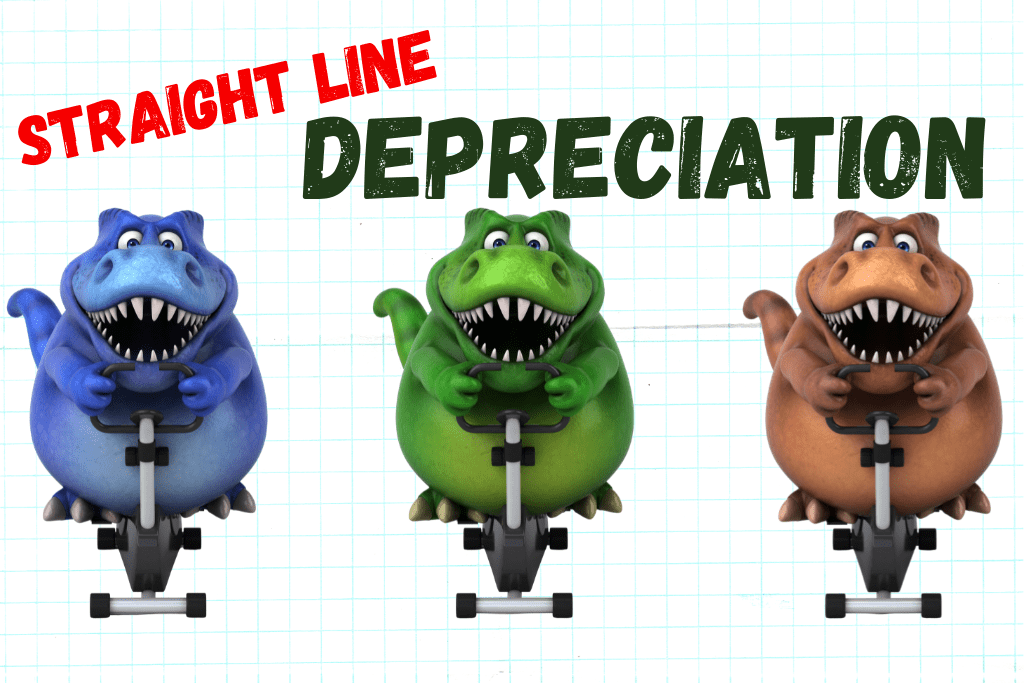Straight-line Depreciation is used to depreciate Fixed Assets in equal amounts over the life of the asset. The basic formula to calculate Straight-line Depreciation is: (Cost – Salvage Value) / Class Life
Example Depreciation Problem
To show the various methods used to calculate depreciation, we will use the following asset for each method. (Units are provided for use in the calculating of Units of Activity depreciation method.)
| Asset 1 | 20xx Ford F350 |
| Asset Name | Vehicles |
| Useful Life | 5 years |
| Cost (Basis) | $40,000 |
| Salvage Value | $2,000 |
| Units: Miles | 100,000 |
How to Calculate Straight Line Depreciation
Straight Line Depreciation spreads the cost recovery (expensing) of an asset evenly over the class life of the asset. The formula to calculate Straight Line Depreciation is:
(Cost – Salvage) / Useful Life = Depreciation Expense
In the case of the first example asset, the Ford F350 truck has a cost of $40,000, a salvage value of $2,000, and a useful life of 5 years.
When we enter those details into the formula for Straight Line Depreciation, we get this:
($40,000 – $2,000) / 5 = $7,600
This means the depreciation expense for the first year of the asset is $7,600.
If the company is tracking its depreciation monthly, the amount of the adjusting entry done each month is $7,600 / 12 = $633.
What is the Journal Entry to Record Straight-line Depreciation?
To record depreciation, an adjusting journal entry is done either once a month or once a year. Generally Accepted Accounting Principles require a monthly entry for those businesses required to follow GAAP. The journal entry to record one month of depreciation expense for this asset is:
| Depreciation Expense | 633 | |
| Accumulated Depreciation | 633 |
For more information on Generally Accepted Accounting Principles, check out this video:
For more examples of Straight Line Depreciation, watch this video:
For more details on calculating depreciation using other methods, check out these articles:
-
Difference Between Depreciation, Depletion, Amortization
In this article we break down the differences between Depreciation, Amortization, and Depletion, discuss how each one is used, and what the journal entries are to record each. The main
-
Adjusting Journal Entries | Accounting Student Guide
When all the regular day-to-day transactions of an accounting period are completed, the next step is to check on the balances of certain accounts to see if those balances need
-
What is a Contra Account?
A contra account is an account used to offset the balance in a related account. When the main account is netted against the contra account, the contra account reduces the
-
How to Calculate Straight Line Depreciation
Straight-line Depreciation is used to depreciate Fixed Assets in equal amounts over the life of the asset. The basic formula to calculate Straight-line Depreciation is: (Cost – Salvage Value) /
-
How to Calculate Declining Balance Depreciation
Declining Balance Depreciation is an accelerated cost recovery (expensing) of an asset that expenses higher amounts at the start of an assets life and declining amounts as the class life
-
How to Calculate Units of Activity or Units of Production Depreciation
Units of Activity or Units of Production depreciation method is calculated using units of use for an asset. Those units may be based on mileage, hours, or output specific to

